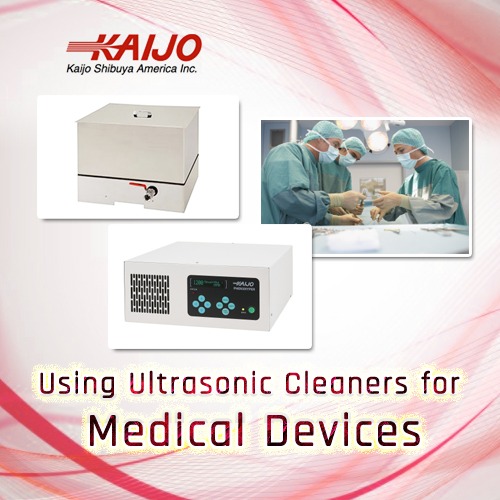Using Ultrasonic Cleaners for Medical Devices
February 27, 2018
 Ultrasonic cleaning systems are often a part of processes used in the manufacture of medical instruments, devices and implants. The method is employed in the everyday use of medical equipment, as well. One reason ultrasonic cleaning is often required is that medical equipment often includes delicate, high-precision designs which contain complex surface geometries.
Ultrasonic cleaning systems are often a part of processes used in the manufacture of medical instruments, devices and implants. The method is employed in the everyday use of medical equipment, as well. One reason ultrasonic cleaning is often required is that medical equipment often includes delicate, high-precision designs which contain complex surface geometries.
Conventional cleaning approaches that use solvents and abrasives would hardly be appropriate — devices used in the human body don’t require cleaning from stubborn stains, after all; instead, they need to be made free of microscopic contamination and chemical residues. Routine cleaning using conventional methods will often leave behind particles of detergents or chemicals. Removing these from delicate structures requires a special approach.
Ultrasonic cleaning technology answers these needs
Ultrasonic cleaners employ the power of cavitation, a natural phenomenon. When liquids are subjected to strong forces, they tend to fracture into microscopic areas of vacuum. When these vacuum bubbles form and collapse, often millions of times each second, they create high temperatures and powerful impact over microscopic areas. These are the forces harnessed by ultrasonic cleaners.
These appliances use powerful high-frequency sound waves to disrupt liquid placed in a cleaning bath to create the cavitation bubbles needed. When medical devices are placed in such a bath, these cavitation bubbles form over the surface. These bubbles are able to dislodge everything from bacteria and fungus to carbon deposits, grease and chemical remnants, with pinpoint precision.
Ultrasonic cleaning technologies offer impressive advantages
Reduced to their simplest form, ultrasonic cleaning appliances are a loudspeaker in a tank of liquid. These speakers are specially designed for the creation of powerful, high-frequency sound waves. As simple as it may sound, this approach produces powerful results unobtainable through other cleaning methods.
Solvent-free cleaning: In other cleaning approaches, including ones that use water, there always are remnants and contaminants left by the cleaning process. The gentle, yet powerful forces brought into play by medical ultrasonic cleaners however, ensure cleaning action that comes with no remnants, an important requirement in medical cleaning applications.
Delicate cleaning for fragile equipment: Medical equipment can be tough in the applications that they are intended for; they can be surprisingly delicate against everyday forces, however. Cleaning such equipment, then, can present special challenges. Ultrasonic cleaning brings to bear powerful forces, but on microscopic areas. It ensures a blend of power and gentleness. Equipment does not need to be touched or handled through the cleaning process, ensuring its safety.
Compliance with professional requirements: The CDC and the WHO recommend the deployment of ultrasonic cleaning technology for medical applications. It is for the simple reason that medical equipment requires a level of cleanliness rarely needed anywhere else. Microscopic surface fissures and interstices are often able to harbor biological or other contaminants, and these simply cannot be reached with conventional cleaning methods. Ultrasonic sound waves, however, are able to dislodge contaminants from smallest crevices, ensuring a high level of medical suitability.
The industry leader in ultrasonic cleaning technology
For more than 65 years, Kaijo Shibuya has been a world leader in the development and use of industrial ultrasonic cleaners for a wide variety of industry applications. From compact systems for accessible use, to much larger systems, Kaijo’s full product line of ultrasonic cleaners can address the needs of the medical industry as required by professional organizations.





